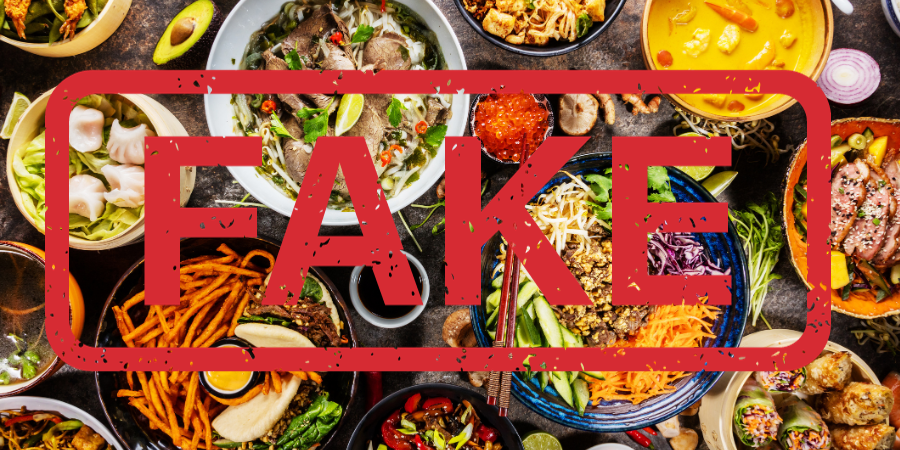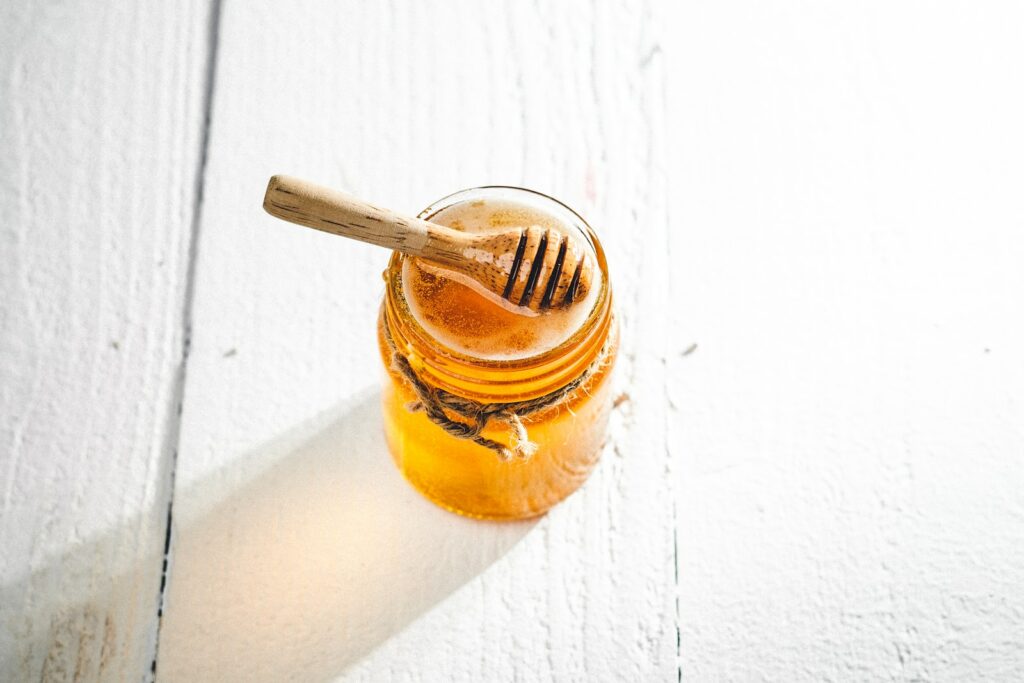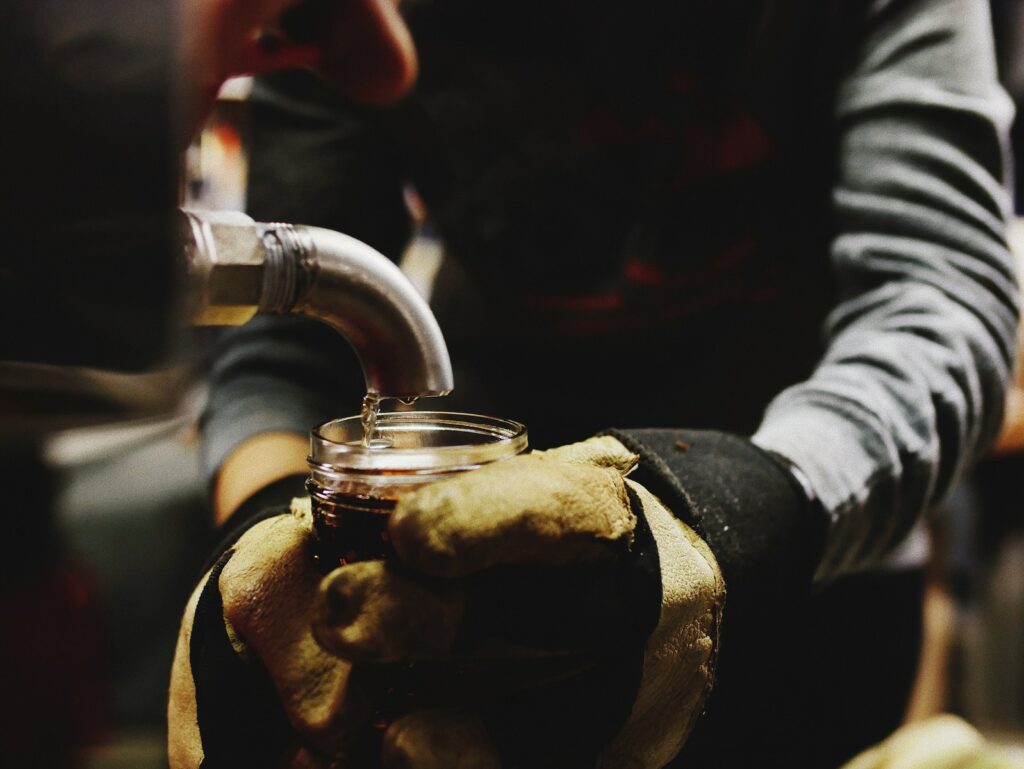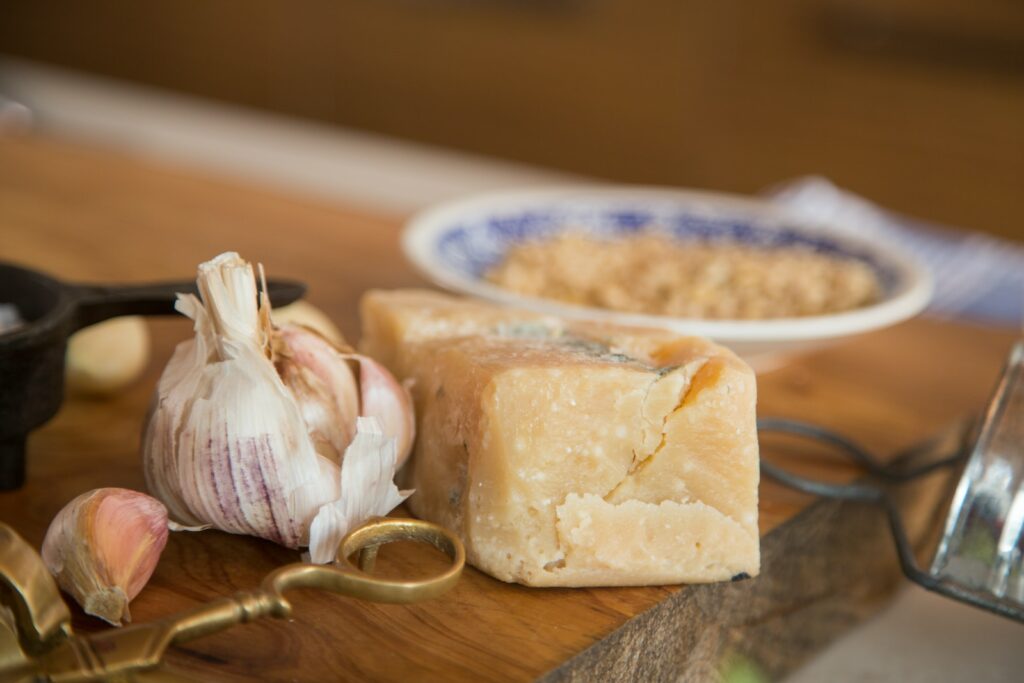
Ever look at your dinner plate and question, “Are these real or fake food?” Surprisingly, eating fake foods is not as uncommon as you may think. The olive oil drizzled over your salad might be just a cheap knock-off. That sweet honey on toast? Perhaps high-fructose corn syrup in disguise. And don’t get me started on the ‘truffle’ flavoring or that 100% maple syrup label – impostors! You see, food fraud is no joke. From our breakfast tables to our fancy dinners out – we’re swimming in an ocean of culinary deceit. Brace yourself as we unmask some supermarket staples. Stay tuned; what you discover will change how you shop forever.
Fake Food Counterfeit Extra Virgin Olive Oil
Understanding the Olive Oil Market
Olive oil, particularly extra virgin olive oil, holds a revered place in many kitchens worldwide. But this high demand and premium pricing have made it ripe for fraud. Astonishingly, up to a third of olive oil traded internationally is adulterated or outright fake.
This might feel like someone swapping your favorite designer wear with an imitation while still charging you full price. Just as discerning shoppers can spot counterfeit fashion goods, we need to learn how to identify real from fake food when it comes to our beloved olive oil.
Identifying Authentic Extra Virgin Olive Oil
Distinguishing between authentic and faked food such as extra virgin olive oil may seem daunting at first. It’s like being asked if you can tell apart twins who’ve decided they’re going on their lives dressed identically.
A few pointers can help us out here though:
- Taste: Genuine extra virgin olive has distinct flavors – fruity notes followed by a peppery finish that tingles your throat slightly.
- Scent: It should smell fresh; think freshly cut grass or green apples.
If these factors are missing in your bottle labeled ‘Extra Virgin,’ chances are it’s masquerading under false pretenses – much like a wolf hiding among sheep.
You could also use laboratory testing but unless you fancy turning into Sherlock Holmes with his chemistry set anytime soon (and let’s face it not all of us do), the previous tips will serve just fine most times.
Counterfeit food items, such as phony olive oil, not only swindle us of our cash but also rob us of the wellness advantages we’re aiming for. Extra virgin olive oil contains beneficial antioxidants and anti-inflammatory compounds that are advantageous for heart health.
Fake food gives a new meaning to the saying ‘all that glitters is not gold.’ In this case, it’s more like ‘all that pours golden and smooth may not be premium extra virgin.’
Key Takeaway:
Extra virgin olive oil is often a victim of food fraud, with up to a third traded globally being adulterated or fake. Don’t get duped. Authentic olive oil has unique flavors – fruity notes and a peppery finish – and smells like freshly cut grass or green apples. Remember, real extra virgin offers not just taste but also heart-healthy antioxidants.

The Sweet Deception: Fake Honey and High-Fructose Corn Syrup
When you’re craving a spoonful of honey, it’s natural to reach for that bear-shaped bottle. But did you know that what appears to be honey might not actually be? In reality, your sweet treat might be nothing more than fake honey, often filled with high-fructose corn syrup.
A Sticky Situation in the Honey Industry
You see, many honey producers have been pulling off quite the ruse. To keep costs low and profits high, they swap out real honey for cheaply made alternatives. An astonishing third of traded honey internationally is adulterated or completely fake according to reports. That means we may not always get our money’s worth when buying those golden jars from grocery store shelves.
Hunting Down Real Honey: A Bear Necessity
Finding genuine honey can feel like navigating through a forest full of imposters – but don’t lose hope. There are some telltale signs that can help us distinguish between real and counterfeit nectar.
- Taste: True raw honey has an intricate flavor profile derived from different flowers bees visit while forging nectar. On the other hand, faux-honey tastes excessively sweet due to its primary component – yep, you guessed it right – high-fructose corn syrup.
- Pricing: Like any good thing in life (except love.), authentic raw honey comes at a cost; after all, bees do work hard for it. If the cost appears too low, it’s likely not genuine.
The Sweet Escape: Honey Laundering
Have you ever heard of honey laundering? Sounds funny but I’m not joking. This illegal practice involves honey producers selling adulterated honey as genuine product. They cleverly conceal its origins by re-routing shipments or masking inferior honey with pollen from high-quality sources.
There’s been a worldwide uptick in this sneaky strategy, causing quite the stir.
Key Takeaway:
Fake honey, often filled with high-fructose corn syrup, is surprisingly common in the supermarket. To avoid this sweet deception, remember: real raw honey has a distinct taste and it isn’t cheap. Beware of “honey laundering” where inferior honey is passed off as the genuine product.
Truffle Oil Impostors
Think you’re savoring the taste of luxurious truffles when you drizzle that pricey truffle oil over your pasta? You might be in for a shock. Most commercially available truffle oils are nothing more than clever fakes, often synthetically made and lacking true truffle flavor.
The Synthetic Shuffle
A lot of what passes as “truffle oil” is actually olive oil mixed with lab-created compounds like 2,4-dithiapentane. This synthetic concoction mimics the smell and taste of real truffles but falls short on delivering an authentic experience.
Manufacturers turn to these fake flavors because harvesting genuine truffles can be incredibly expensive. These elusive fungi grow underground near tree roots and are notoriously difficult to find without trained dogs or pigs sniffing them out.
The Pricey Pretenders
Fraudsters exploit our love for gourmet experiences by selling us imitation products at premium prices. But here’s the catch: while they may mimic some characteristics, they don’t provide the complex flavor profile that makes real truffles such culinary treasures.
If you’ve ever asked yourself why your own risotto doesn’t quite measure up to the one from that Italian restaurant, even though you shelled out for ‘premium’ truffle oil, there’s your answer.
Distinguishing Genuine From Fake Food
Finding real deal in a sea of truffle oil fraud can be tricky. To help, look for oils that list “truffles” as one of the first ingredients and avoid those with words like ‘flavor’ or ‘aroma’. Real truffle oil should also have visible pieces of truffle floating in it.
But don’t rely solely on visuals. The nose knows – real truffles have a distinctive smell: earthy, garlicky, and slightly sweet. If your oil smells more like chemicals than a forest floor after rain, it’s likely synthetic.
A Word to the Wise About Fake Food
If you’re a true gourmet who enjoys preparing food and desires genuine flavors in their dishes, it’s essential to be aware of what is actually being added to the meals. Being able to identify fake truffle is key.
Key Takeaway:
Watch out for truffle oil tricksters. Most store-bought versions are fakes, made with lab-created compounds instead of real truffles. To spot the genuine stuff, look for “truffles” listed as a main ingredient and trust your nose – authentic truffle oil smells earthy and slightly sweet. Don’t let fake flavors fool you.

The Maple Syrup Masquerade
Think about your favorite pancake or waffle topping. Is it that thick, sweet maple syrup? You may believe you’re pouring 100% pure goodness onto your breakfast treat, but here’s a sticky truth: half of what’s labeled as such might be fake maple syrup.
Frauds in the food industry are nothing new. But when it comes to our beloved pancakes’ companion, things get personal.
A Sticky Situation
So why does this matter? Well, real and fake syrups don’t just differ in taste; they also vary greatly in their nutritional value. The real deal is rich with antioxidants and minerals like manganese and zinc. Fake ones often contain high fructose corn syrup – not exactly a health food.
To avoid getting fooled by imitation products masquerading as the real thing, there are some tips to follow which we’ll delve into shortly.
Navigating Through The Trees
Distinguishing between genuine and counterfeit can feel like finding a needle in a haystack—or rather—a sugar maple tree amongst all others.
Your first step should be checking labels thoroughly for any sign of additives or “flavors.” True 100% pure product will have no other ingredient except “maple syrup.” It’s really that simple.
Sweet Sensory Clues
You know how each superhero has an arch-nemesis? For genuine maple syrup, its enemy number one is ‘pancake’ or ‘table’ syrups. These imposters usually come at suspiciously low prices and bear overly sweet, almost artificial taste.
Real maple syrup is not just a sugary sweetness, but rather has an earthy richness with notes of caramel, vanilla, and even spice. It carries an earthy richness with hints of caramel, vanilla, and even spice.
The Pour Test
You can also play detective by observing how it pours. Genuine product is thinner than its fake counterparts which are often thick due to added sugars.
Fighting The Fake Food Fraud
As folks become smarter with their food picks—leaning more towards natural rather than synthetic—the need grows.
Key Takeaway:
Ever felt duped by counterfeit maple syrup? You’re in good company. Surprisingly, half of the ‘pure’ syrup out there could be a fraud. Authentic and imitation syrups don’t only differ in taste, but also have significantly different nutritional values. Don’t get hoodwinked by inexpensive knock-offs. Be vigilant when reading labels for any additives or ‘flavors’. Keep this in mind – genuine maple syrup should

The Parmesan Cheese Pretense
When you sprinkle that fancy-looking “Parmesan” cheese onto your pasta, are you sure it’s the real deal? Turns out, there’s a lot of Parmesan cheese fraud happening in supermarkets.
Fraudulent practices have infiltrated even this esteemed sector of dairy. But why does this happen?
The Lure of Fake Food Parmesan
Around the world, there are only about 300 dairies certified to produce authentic Parmigiano-Reggiano. This scarcity fuels a black market for fake parmesan. A deceptive label and an unsuspecting customer is all it takes to pass off cheap knock-offs as high-quality product.
Cheaper ingredients can mimic the texture but not quite capture the flavor. Wood pulp has been found in some cases – definitely not what one expects on their spaghetti.
Distinguishing Authenticity from Fake Food
So how do we avoid getting duped by counterfeit parmesan? It starts with understanding what genuine Parmigiano-Reggiano is.
- An exclusive club: Real parm comes from select regions in Italy and is made according to traditional methods that date back centuries.
- Say cheese. Genuine Parmigiano should be labeled ‘Parmigianino Reggiano DOP’ (Protected Designation Origin).
- Nature’s call: The milk used must come from cows fed primarily on grass or hay.
Beware of Fake Food Imitations:
To ensure authenticity when shopping:
- You’ve got to feel it: Genuine Parmigiano-Reggiano has a hard, gritty texture and is pale yellow in color.
- Check the rind: The cheese’s name should be imprinted on the rind. Think twice before you purchase it.
Want to make sure you’re getting genuine Parmesan and not fake food? Choose sellers who prioritize honesty over earnings. Remember, we are what we eat.
Fake Food Conclusion
Now you know the bitter truth about some of the most faked food. Olive oil, honey, truffle oil – all victims of a cunning culinary con game. We’ve debunked those ‘100% maple syrup’ labels and questioned that Parmesan cheese on your pasta. We’re not just more aware; we’re smarter shoppers. This isn’t just about getting value for money; it’s also about safeguarding our health from potentially harmful substitutes.
For more articles about food safety and health, be sure to read any of these topics right away:
FAQs in Relation to Most Faked Food
What is the most counterfeited fake food product?
Olive oil, specifically extra virgin olive oil, tops the list as one of the most frequently faked foods globally.
What are fake food products?
Fake foods refer to items misrepresented or adulterated in some way. This could be diluting a product, using cheaper ingredients, or mislabeling an item entirely.
What is the most counterfeited fish?
The Red Snapper takes first place here – it’s often swapped out for less expensive species like Tilapia and Rockfish
